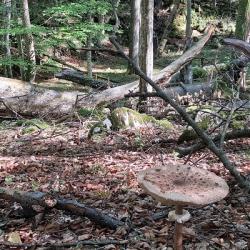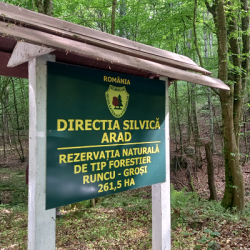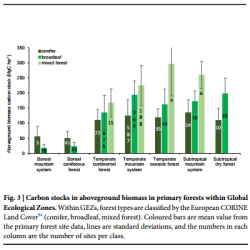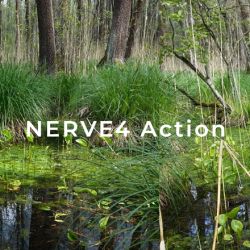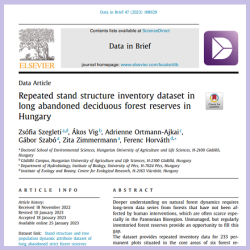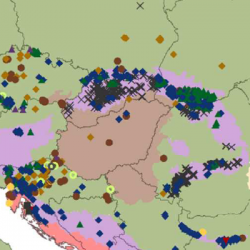Szarvasbőgés közepette mértük fel az Alsó-hegy ER magterületét. Töbrök és mélységes víznyelő barlangok izgalmas világa ez, ahol a szarvasbikák nem törődtek a faállomány-szerkezetet felmérő kutatókkal. A fennsík gyertyános-tölgyes állománya nem túl öreg és többnyire egyhangú. Azonban a töbrök egy részében igazi öregerdő-foltok maradtak. Azon belül a kitettség által meghatározott üdébb, vagy a délies oldalakban szárazabb erdőtípusokkal.
Az Erdőökológiai Kutatócsoport egy régóta tervbe vett ismerkedő bejárást tartott a Zarándi-hg., Runcu Grosi erdőrezervátumban 2025. április végén, a terület kutatói (Catalin és Any Mary Petritan) vezetésével.
A Civile EU Presidency 2024 keretében a Nagy Tavak és Vizes Élőhelyek Szövetsége 2024 októberében tartotta a “Forests in the EU - Seeing the forest behind the trees" című nemzetközi konferenciát.
"Tree Species assemblages, stand structure and regeneration in an old-growth mixed conifer forest in Kawang, western Bhutan" Thesis by Attila Biró was defended in this year. He explored the temperate conifer forests of Bhutan.
Carbon accounting in the land sector requires a reference level from which to calculate past losses of carbon and potential for gains using a stock-based target. Carbon carrying capacity represented by the carbon stock in primary forests is an ecologically-based reference level that allows estimation of the mitigation potential derived from protecting and restoring forests to increase their carbon stocks.
A deeper understanding of natural forest dynamics requires long-term data series from forests that have not been affected by human interventions, which are often scarce, especially in the Pannonian Bioregion. Unmanaged, but regularly inventoried forest reserves provide an opportunity to fill this gap.
This Ural owl didn't trouble her/himself when was discovered in the core area of the Kékes Strict Forest Reserve.
The Doctoral Committee of Szent István University and Doctoral School of Horticultural Sciences are pleased to invite You to the
public discussion of the PhD dissertation of Viktor Papp, titled as
"Taxonomy and conservation status of the lignicolous basidiomycetes in Juhdöglő-völgy Forest Reserve" (2015)
Date: 4 of February, 2016
